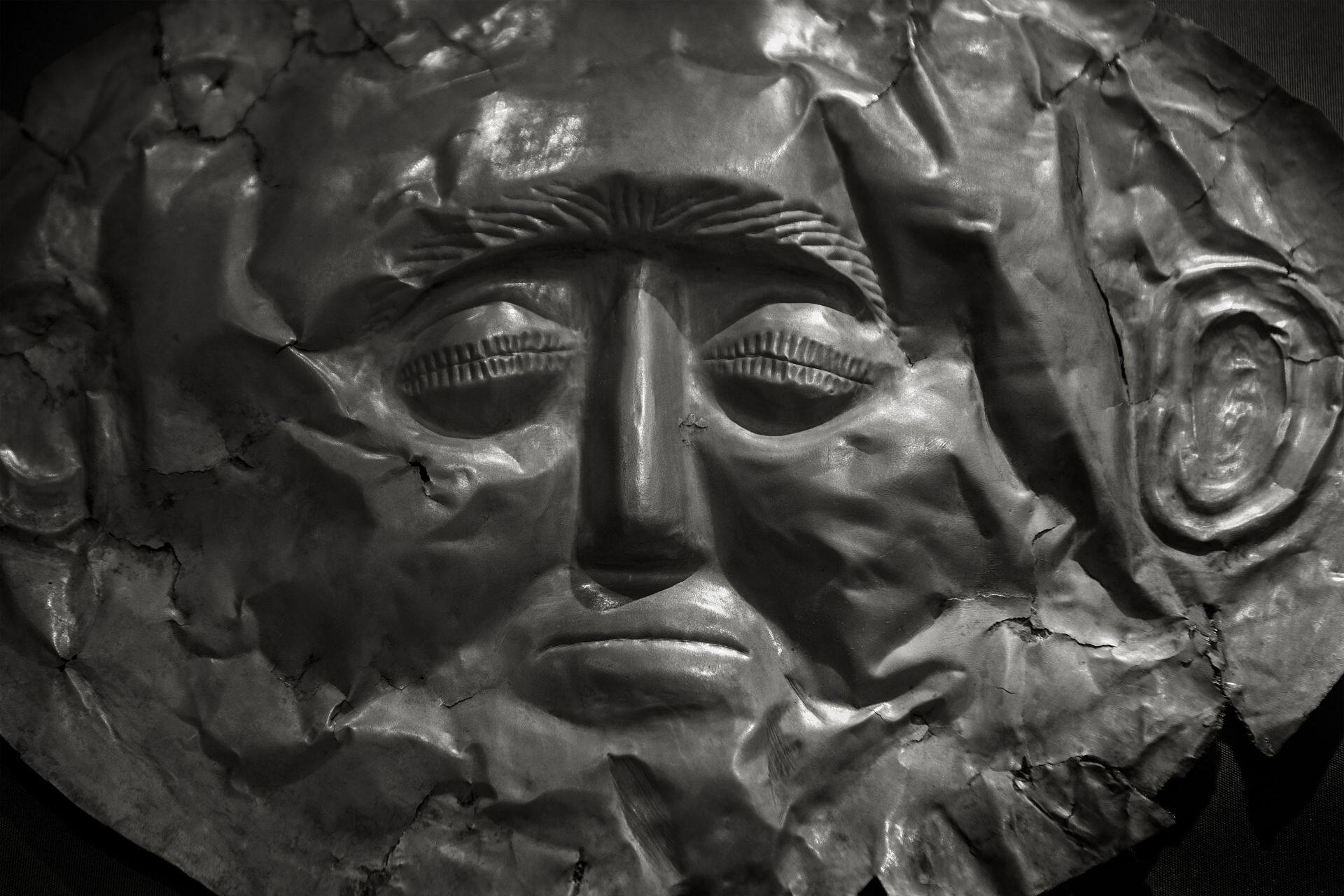Three Greek artists have combined for an exhibition on the topic of death, with the ultimate goal being to explore and facilitate open discussion on this subject.
The exhibition, called “Thanatos: Death Personified”, is running at The Shop Gallery at 112 Glebe Point Road, Glebe from October 26-November 1, showcasing works by photographers Effy Alexakis and Yannis Dramitinos and painter George Michelakakis.
The theme of death has been of keen interest to all three artists, Leonard Janiszewski explained, with the hope being this gallery (open from 12 p.m. to 6 p.m. on every day) makes discussion of this topic more accepted in Australia.
“They wanted to utilise their artistic mediums as a means to investigate their personal considerations and cross-cultural experiences of death, focusing upon both physical and metaphysical elements,” Dr Janiszewski told Neos Kosmos.

“Death they point out is a mortal end that we will all experience – that of others, and that of our own demise – but in Australia it remains out of open public discussion.”
The ‘in conversation’ event featuring Professor Vrasidas Karalis and George Alexander and mediated by Effie Carr, was initiated by the three artists who have collaborated to create and produce the exhibition THANATOS – Death Personified.
A lecture has been organised as part of the exhibition for Sunday October 29 at 4 p.m., wherein Professor Vrasidas Karalis from the University of Sydney and George Alexander (ex-Art Gallery of NSW) will explore this topic based on their recent experiences of losing their respective partners.
The event will be mediated by lawyer and author Effie Carr, as the two speakers discuss their personal experience of love, friendship, loss, grief, and the power of human empathy to come to terms with mortal parting.

Dr Janiszewski stated this was initiated by the three artists as they believed that an intimate personal discussion of loss and grief by individuals that were willing to discuss their recent experiences of death, would further their goal to evoke “the significance of the end of life upon those who remain behind”.
The history academic at Macquarie University said people should expect a “rollercoaster ride through deep sorrow, moments of joy through memory and spiritual re-evaluations” for anyone interested in the exhibition and lecture.
“It is hoped that audience members will take away broader, more meaningful relationship to death and its personal and sociocultural experience,” he told Neos Kosmos.
The works on display
All three artists have explored the topic of death in their own, unique manner.

Mr Dramitinos’ work covers images taken from his wonderings among the generations of gravestones in Sydney’s Waverley Cemetery, utilising the silences between the tombstones, their forms and inscriptions to decipher attitudes to lives lived and death memorialised.
Mr Michelakakis’ paintings evoke the socio-political effects of institutionalised religion upon individuals and society and the face and understanding of death if one considers the ‘death’ (absence/non-existence) of a personified God.
Ms Alexakis, in her three series on display, embraces a juxtaposition of ancient Greek, Greek Orthodox and ancient Egyptian ritual, ceremony and human emotions, empathy and individual spirituality.
Ms Alexakis explained that the first series, which covers extensively the openness in which death is confronted in Greece (particularly in villages), started back in 1983 after her father’s sudden passing, her first experience losing a loved one.
“I chose to photograph what was happening around me as a way to extricate from the situation, the camera was a barrier between me and the reality that was happening around me,” Ms Alexakis told Neos Kosmos.

The series includes images she took in 1985 while visiting her parents’ village in Greece, including one of a son clearing the bones from his father’s grave as is the practice in Greece to reuse the burial plot.
“Death in Greece, particularly in villages, is confronted openly, rather than distanced behind sombre ceremony,” she said.
Ms Alexakis detailed that to reuse the land space, after a period of at least 3 years, remains are exhumed from their tombs by the closest relatives under the supervision of a priest, then undergo a cleaning process using water and red wine.
The clean bones are then blessed and placed in a new white cloth bag, initialled, and placed into the communal ossuary or into boxes at the cemetery chapel.

Her second series explores the burial processes and practices in Greece, including an image of a ‘death mask’ photographed at a museum as well as burial boxes that bones are placed into after they are exhumed, with a peek inside the communal ossuary and burial plots at her parents’ village in the Peloponnese.
Her third series features a collection of images taken from her numerous trips over a ten-year period to Egypt where she was employed to document tombs and wall scenes, the photographs taken for the expeditions of Professor Naguib Kanawati from Macquarie University.
“We seem to have an obsession with the ancient Egyptians’ belief in life after death and what remains also gives us a fascinating insight into how they lived,” Ms Alexakis told Neos Kosmos.
In addition to the lecture, an Opening Drinks for the exhibition has been organised for this Saturday, October 28 at 4pm.
